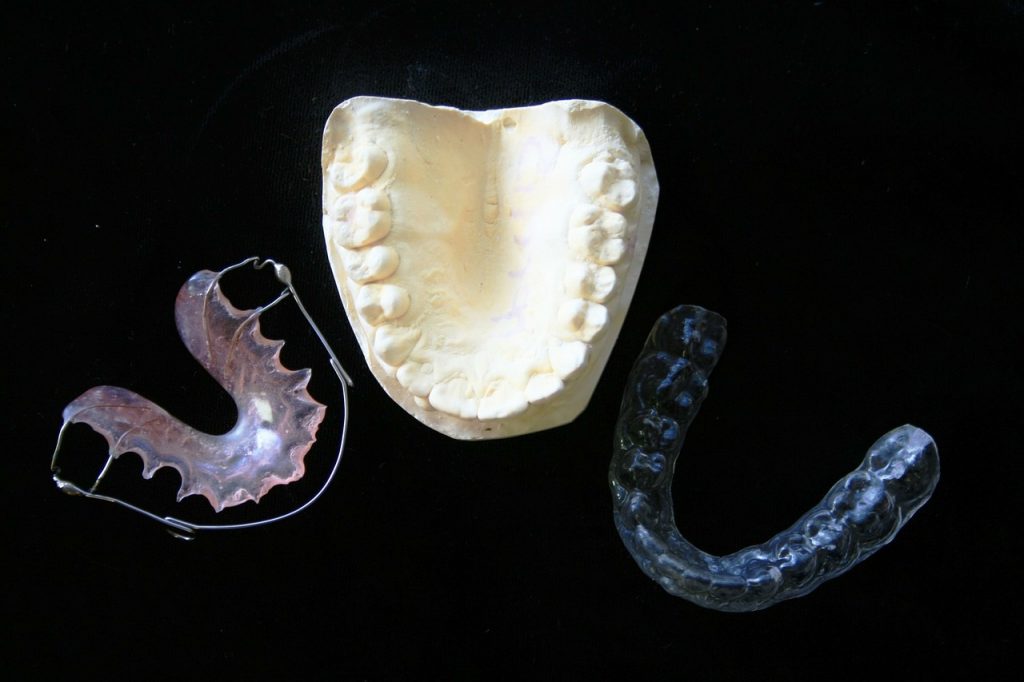What is a Retainer?
A retainer is a piece of plastic or metal that is custom-made for each individual. It fits the top of the teeth and mouth. No two retainers are alike, even though many look similar.
Retainers are really common. In fact, all people who have had braces need to wear a retainer after getting their braces taken off. Other people wear them to move their teeth, to help with jaw pains, grinding, or clenching.
Why Do I Need to Wear a Retainer?
Retainers After Braces
A retainer helps teeth stay set in their new positions after wearing braces. Teeth can shift after the braces are taken off. This can be especially true for children who are still growing. Therefore, it is important to wear a retainer.
After braces are removed, a scan is taken of your teeth. The lab technician is then able to print a 3D model of your teeth to make a retainer that fits only you! They will tell you how long to wear it and when. For example, you might have to wear it all day for 2 weeks but then only at night after that. Some people may wear their retainer only at night right from the start. The retainer keeps the teeth in line and you won’t even notice it while you’re sleeping! Its so important that you continue to wear your retainer as long as you want straight teeth. Our bodies are always changing and so will your teeth if you stop wearing your retainer.
Retainers for Closing a Space Between Teeth.
Other people may wear retainers to close a space between their teeth or just to move one tooth. In these cases, braces aren’t needed because retainers can do the job.
When you wear a retainer for any reason, certain teeth may feel pressure and might even feel sore for the first few days. If you experience this, don’t worry, it’s completely normal.
Getting Fitted for a Retainer
Most orthodontists will fit you for the retainer using a material known as alginate (say: AL-juh-nate). It’s a chewy, chalky kind of thick liquid that makes a mold of your teeth when you sink them into it. The fitting process is fast, painless, and doesn’t even taste bad. However, at McDonough we are one of the few Orthodontists to utilize iTero® Digital Scanner which allows us to make a digitized replica of your mouth and avoid the use of alginate.
Adjusting to Wearing Your Retainer
When you first start wearing a retainer it may feel a little strange at first. But that is normal. But if your retainer causes any pain or cuts or rubs against your gums see your orthodontist for an adjustment
You will also have to get use to talking while wearing a retainer. Start by talking slowly at first. Here’s a little trick that may help – read aloud to yourself several minutes a day for practice. After some time you won’t even notice it’s there. You may also notice an increased flow of saliva in the first few days of wearing the retainer. This is normal and should go away within the first day or so.
So you see, a retainer is an important part of treatment for correcting crooked teeth, spaces in teeth or helping to correct medical problems. If you have any questions or need to find out more about braces and retainers, please contact us.
We are here to help you.
Sincerely,
Dr. David McDonough

